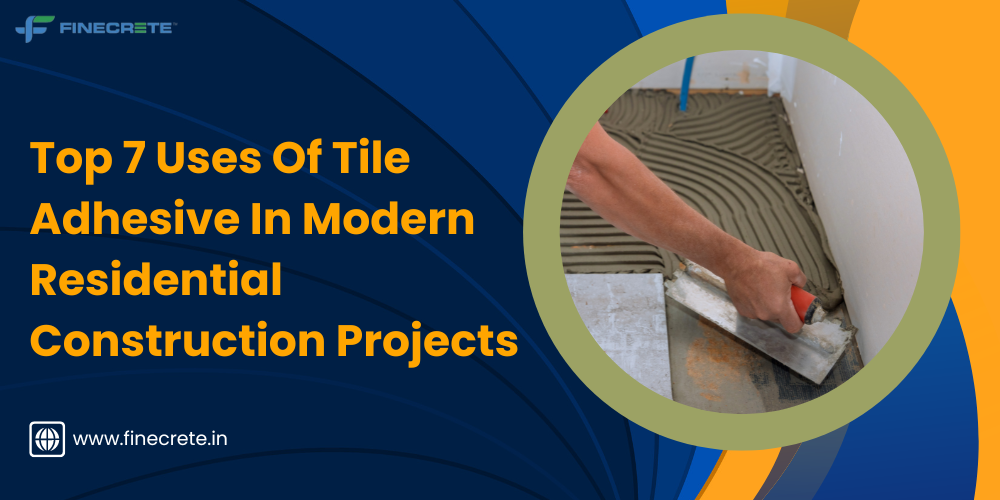Tile adhesive, also referred to as Tile glue or Tile cement, is a versatile and essential material in modern residential construction projects. It plays a crucial role in ensuring proper installation and longevity of tiles. It provides strong, durable bond between tiles and various surfaces. Naturally, it serves as an indispensable component for apt completion of construction projects. Know about the top 7 uses of tile adhesive in residential building projects.
- Installing Ceramic and Porcelain Tiles
Tile adhesive creates a strong bond between the tiles and the substrate, ensuring that they remain securely in place. Whether it is for flooring, walls, or even ceilings, tile adhesive provides excellent adhesion and prevents the tiles from shifting or cracking.
- Securing Natural Stone Tiles
Natural stone tiles, such as marble, granite, or travertine, require a reliable adhesive to ensure proper installation. Tile adhesive is specifically formulated to provide the necessary bonding strength for securing natural stone tiles. The flexibility and adhesion properties of the adhesive help prevent the tiles from coming loose. This ensures a long-lasting and aesthetically pleasing installation.
- Fixing Glass Tiles and Mosaics
Glass tiles and mosaics are delicate and require a specialized adhesive to achieve a secure bond. Tile adhesive designed for glass tiles has unique properties. These provide a strong and transparent bond while preventing any visible marks on the tile surface. The non-staining and non-sagging characteristics of the adhesive ensure a seamless, professional finish for glass tile installations.
- Repairing and Retiling Existing Surfaces
Tile adhesive is not only useful for new tile installations but also for repairing and retiling existing surfaces. Whether it comes to replacing a cracked tile or fixing a loose one, tile adhesive can be used to secure replacement tiles to the existing surface. The bonding strength and quick-drying properties of the adhesive make it an ideal choice for repairing and retiling projects.
- Creating Tile Backsplashes
Tile backsplashes are a popular feature in kitchens and bathrooms, adding style and protection to the walls behind sinks, stoves, and countertops. Tile adhesive is essential for creating these backsplashes, ensuring that the tiles adhere securely to the wall surface. The water-resistant properties of this type of adhesive make it suitable for areas exposed to moisture and splashes.
- Adhering Large-Format Tiles
Large-format tiles have become increasingly popular in modern residential construction projects. These tiles are heavier and need a strong adhesive to support their weight. These prevent any issues with sagging or cracking. Tile adhesive formulated for large-format tiles offers the necessary bonding strength and flexibility to ensure a successful installation.
- Installing Tiles in Wet Areas like Bathrooms and Kitchens
Wet areas such as bathrooms and kitchens require tile adhesive with water-resistant properties. This type of adhesive forms a moisture barrier, preventing water from seeping through and causing damage to the underlying surfaces. Homeowners can use tile adhesive designed for wet areas and rest assured, knowing that their tiled surfaces will stay protected from water-related issues.
Tile adhesive plays a crucial role in modern residential construction projects, offering a wide range of uses. Homeowners can use these to ensure a successful, long-lasting tile installation that makes their living spaces more functional while catering to the aesthetic needs as well.






